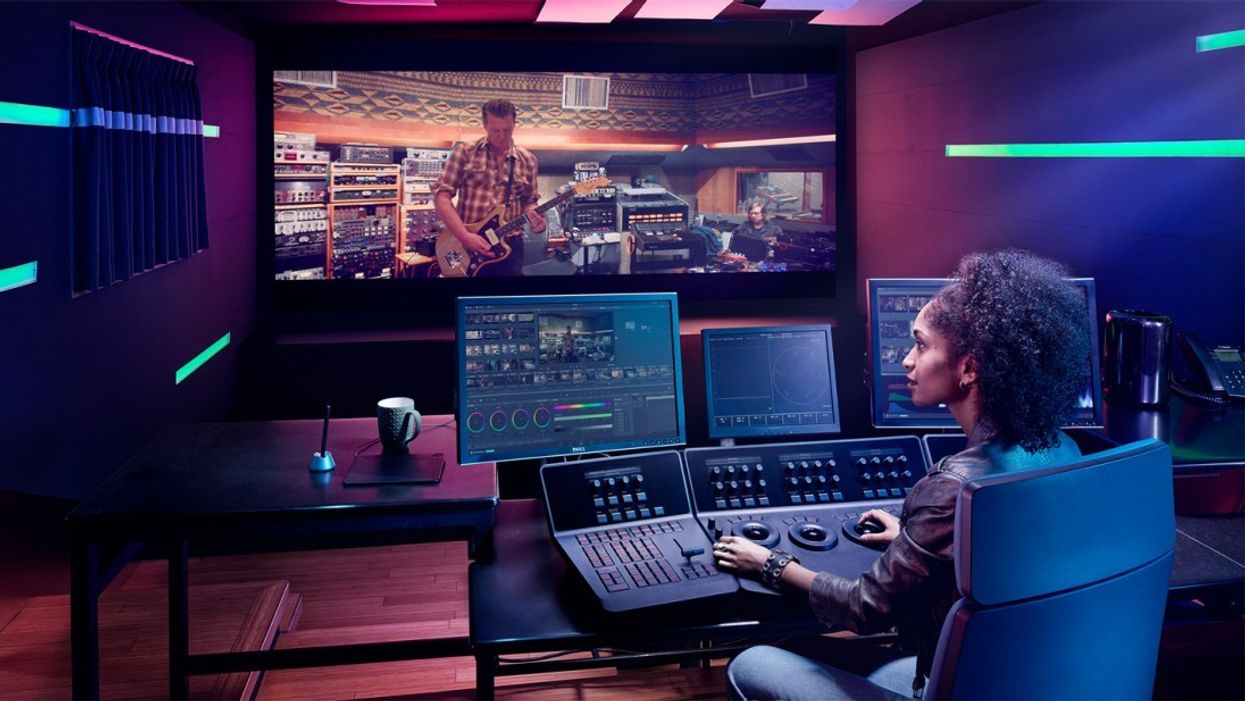Best Post-Production Tools of 2017
Hands down, the hottest competition of the year has been among post-production tools.

This year, all the biggest and bloodiest of battles have been in post. With the end of life of Final Cut 7, a whole wave of editors and small post houses that had been desperately hanging on to that popular platform now finally have to make the choice to a new platform, and the competition to be that platform is stiff. Here are some of the standouts.
Resolve 14.1

Blackmagic DaVinci Resolve has always allowed for some sort of shared workflow via its database-centric design, but with the Release of 14 this year (and especially the release of 14.1 this month, which created a separate app for setting up for the shared database), we're really starting to see an expansion of the features that should make it attractive for post-production teams big and small.
Our favorite feature is definitely the built-in chat, making it easier for teams spread across rooms in a facility to keep in touch with each other without the poor optics of switching to your Gmail for Gchat. Add on top of that sequence compare and integration, sequence level work in the color room for a true lead colorist/junior colorist workflow, and a host of performance improvements, and Blackmagic is pushing super hard this year.
This isn't even talking about the huge improvements we see with full Fairlight integration, which, by competing with the tools from ProTools, could eventually mean no roundtrips at all, with every step (camera downloads, transcodes, edit, color, sound design & mix, and exports and mastering) happening in one seamless application. We're getting closer and closer to that dream.
Premiere Sharing

Keeping the "attack on shared workflow mountain" theme going, Premiere rolled out a whole host of features in September that should make it easier on Premiere users to work on collaborative projects. There are VR and 360° updates and some cool new motion graphics tools in there as well, but the biggest thing is the ability to share a project, lock and unlock projects, and generally mimic more of a "bin sharing" Avid model but in a Premiere workspace.
It still requires being on local shared storage (as does Resolve), and the toolset for doing that over the cloud isn't really there yet (mostly because of how slow the internet is compared to real shared media over fiber or Thunderbolt), but we're getting there, and this is a great way for Adobe to keep itself super competitive.
Final Cut Pro X gets three-way color

It's rare for Apple to give in to popular pressure. Apple will break radically from the past, but the company seldom admits that it's wrong. With FCP-X, the color tool was switched to something called the color board, designed to be more intuitive, but it never really took off. With 10.4, Apple has relented and included the classic three-way color corrector in the editing application. It's a rare concession to popular demand, and it's appreciated.
Of course, since it's Apple, they had to implement it in their own custom way, but it's still three-way color, and that's good. Now, if Apple were just a little more together, this update would've come out before FCP-7 died, but we still think it's a worthwhile improvement and that X might be on it's way to getting some traction in higher end post.
Cinematch from FilmConvert

One of the biggest stories out of NAB for us this year was CineMatch from FilmConvert. As much as we all dream of projects all shot on the same camera and lenses, the reality of the world is that often we can only afford a single high-end A camera rental and fill in with B and C cameras that don't match in quality. The promise of CineMatch is the ability to match the color rendering, latitude, and "feel" of the images generated by those cameras together perfectly in post-production with a single click, making post workflows easier when the footage is all over the map. Hopefully, this will just be a tool making life easier in post, and won't further embolden producers and directors to shoot with crazier arrays of cameras since "you can just fix it with Cinematch, right?"
SmallHD 702 OLED

This one really straddles the line between production and post, but it shows up in post for us because, honestly, it's such a great tool in both worlds. The Small HD 702 OLED is a 7", battery powered monitor that is color accurate for Rec. 709. Mostly, this will live it's life on set, but by having a cinematographer/director monitor that is actually color accurate, and matches the monitors we have in post, it cuts down tremendously in DPs sitting in the post suite and saying "Hey, it didn't look that way on set," because, actually, it did, since our monitors match!
In addition, as a post tool, it's finally a monitor small enough to take with you on the road, making it the perfect monitor for remote color grading jobs. Especially if you have a client who might want to double check a few shots again after you deliver, taking this with you wherever you go so you can fire up Resolve and a mini monitor wherever you are and check your images is a huge bonus.











